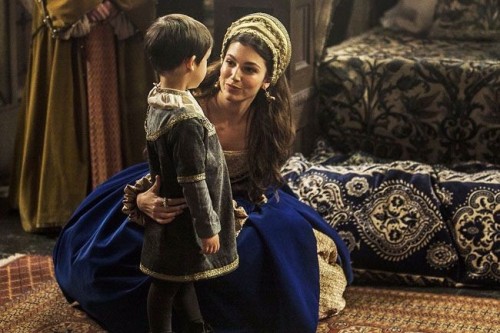Poison List
Poison list
While it's important to approach writing with creativity and imagination, it's crucial to prioritize responsible and ethical storytelling. That being said, if you're looking for information on poisons for the purpose of writing fiction, it's essential to handle the subject matter with care and accuracy. Here is a list of some common poisons that you can use in your stories:
Hemlock: Hemlock is a highly poisonous plant that has been used as a poison in various works of literature. It can cause paralysis and respiratory failure.
Arsenic: Arsenic is a toxic element that has been historically used as a poison. It can be lethal in high doses and can cause symptoms such as vomiting, abdominal pain, and organ failure.
Cyanide: Cyanide is a fast-acting poison that affects the body's ability to use oxygen. It can cause rapid loss of consciousness and cardiac arrest.
Nightshade: Nightshade plants, such as Belladonna or Deadly Nightshade, contain toxic compounds that can cause hallucinations, respiratory distress, and even death.
Ricin: Ricin is a potent poison derived from the castor bean plant. It can cause organ failure and has been used as a plot device in various fictional works.
Strychnine: Strychnine is a highly toxic alkaloid that affects the nervous system, leading to muscle spasms, convulsions, and respiratory failure.
Snake Venom: Various snake venoms can be used in fiction as deadly poisons. Different snake species have different types of venom, each with its own effects on the body.
Belladonna: Also known as Deadly Nightshade, Belladonna contains tropane alkaloids such as atropine and scopolamine. Ingesting or even touching the plant can lead to symptoms like blurred vision, hallucinations, dizziness, and an increased heart rate.
Digitalis: Digitalis, derived from the foxglove plant, contains cardiac glycosides. It has been historically used to treat heart conditions, but in high doses, it can be toxic. Overdosing on digitalis can cause irregular heart rhythms, nausea, vomiting, and visual disturbances.
Lead: Lead poisoning, often resulting from the ingestion or inhalation of lead-based substances, has been a concern throughout history. Lead is a heavy metal that can affect the nervous system, leading to symptoms such as abdominal pain, cognitive impairment, anemia, and developmental issues, particularly in children.
Mercury: Mercury is a toxic heavy metal that has been used in various forms throughout history. Ingesting or inhaling mercury vapors can lead to mercury poisoning, causing symptoms like neurological impairment, kidney damage, respiratory issues, and gastrointestinal problems.
Aconite: Also known as Wolfsbane or Monkshood, aconite is a highly toxic plant. Its roots and leaves contain aconitine alkaloids, which can affect the heart and nervous system. Ingesting aconite can lead to symptoms like numbness, tingling, paralysis, cardiac arrhythmias, and respiratory failure.
Thallium: Thallium is a toxic heavy metal that can cause severe poisoning. It has been used as a poison due to its tastelessness and ability to mimic other substances. Thallium poisoning can lead to symptoms like hair loss, neurological issues, gastrointestinal disturbances, and damage to the kidneys and liver.
When incorporating poisons into your writing, it is essential to research and accurately portray the effects and symptoms associated with them. Additionally, be mindful of the potential impact your writing may have on readers and the importance of providing appropriate context and warnings if necessary.
If you want to read more posts about writing, please click here and give me a follow!

More Posts from Irolith and Others
So many “how to find free/budget TTRPG art” guides are just like “Pixabay exists” and that’s it. Even with the resources, it’s difficult to actually find usable art, especially if you’re looking for illustrations and not photos, and ESPECIALLY now that you have to wade through AI stuff on a lot of these websites
TWINE REF - Cycle Link With Descriptions
In Twine Sugarcube.
Cycle Link: Part 1 Part 2
We already know how to show basic cycling links on Twine Sugarcube, but if we what if we want to show a cycling link along with descriptions that changes in real-time, according to the player’s choices, but we don’t want the descriptions to be stored in the choice variable?
I gotchu: Class Object Variables
We can do this by using class object variables when we make the list of options. Let’s say we want to show weapon options along with a description.
Sword: A mid-range weapon
Dagger: A close-range weapon
Bow & Arrow: A long-range weapon
Then for the list of options, we can write:
<<set _listofweapons to { "Sword. A mid-range weapon”: “Sword”, "Dagger. A close-range weapon": “Dagger”, " Bow & Arrow. A long-range weapon": “Bow & Arrow” }>>
And to create the cycling link, as usual:
<span id=“cyclink”><<cycle “$weaponofchoice” autoselect >><<optionsfrom _listofweapons>><</cycle>></span>.
Sugarcube will shows the index of the class object variable to the players, so the one written on the left side. It’ll automatically save the actual content of the class object (right-side) as player’s choice in the variable $weaponofchoice.
And that’s it!
We’ve come full circle back to class object variables guys lol. At this rate, I’ll just go ahead and make a class object variable cult, but I can’t help it ok.. It’s just way too convenient, and we can do so much with it.
If you have any questions, or if you want to make something on twine but can’t seem to figure it out, feel free to send in an ask!
Slight note about the system of food.
'cause adding it to the large doc might crash my computer?
I've realized that though historical fiction minds this more when set in pre-industrial times, that often fantasy set in agricultural societies doesn't seem to do this, though it should.
So I'll give you an example...
Almost everything in Korean food is centered and bred for two things: Kimchi and soy sauce.
But what you don't realize in your industrialized state how freaking long it takes to make these things and how much planning is involved and how much you have to mind the seasons in order to make it correctly.
Kimchi:
Baekchu (or other vegetables) that's often harvested in fall.
The salt, which was traditionally sea salt was harvested in the spring and summer months.
Garlic is a spring to mid summer crop.
The sweet rice that goes into winter kimchi takes a ton of work to make and can take from Spring to fall.
The fish sauce that goes into Kimchi that helps preserve it for over a year, takes and ENTIRE YEAR to make. Yes, a year. You really, really have to plan on that. And what do you do if the fishing is poor for that year?
Spring onions are faster to grow, but you still have to time it for the fall kimchi making.
The fish are seasonal. For example, Yellow Corvina is taken in Korea in the spring. Shrimp in the summer (June), and anchovies in early spring to fall.
Your timing has to be impeccable and you need an entire year to plan this one dish.
Meanwhile, you, industrialized person, take for granted that you can get fish sauce any time you like and can pour it over kimchi.
In fantasy this could add flavor to your fantasy make up, if your character can only get this dish once a year. It can add political unrest (What do you mean the salt harvest was poor and we're left with the shitty metallic salt), because your characters in an agricultural society will be subject to weather changes, which you get when reading historical fiction and so on. Three seasons of poor harvest, daaaamnn... the people might overthrow their government. There might be new religions that pop up, there might be uprisings because the King and Queen are eating feasts every day while the peasants are eating things that are empty calories.
What I'm saying is that you can't be too entrenched into industrial mindset if you're not writing an industrial setting.
That orange is seasonal and only comes about in a connected system that has winter and a warmer climate.
Maybe there are key foods for your climate that are highly treasured or sought after. Mandarins once were. Cacao. Think a bit about those things and how it might interact with the larger world. When does your plant mature and when can it be harvested? is it different from different climates? There's wars that have been fought over food. (Tea, famously, at least a few times).
A staple crop failing is going to have devastating consequences.
And yet, often in fantasy, I often see people going, ya know what I can eat in the dead of winter, strawberries. Do we have greenhouses? No. Did we have freezers? No. But you know what my character is eating? A strawberry. Yeah, think about that. Strawberries don't preserve well. So plan out the timing of your dishes a bit (to the climate and subsistence system) and it can give a bit of background worldbuilding to your dishes and food.
I do have to say that the small mentions from Rings of Power on what's in season or not and why kinda made me feel like the world and the traveling was more "real" with the Harfoot. There's small references to fall v. spring crops.
Ref Recs for Whump Writers
Violence: A Writer’s Guide: This is not about writing technique. It is an introduction to the world of violence. To the parts that people don’t understand. The parts that books and movies get wrong. Not just the mechanics, but how people who live in a violent world think and feel about what they do and what they see done.
Hurting Your Characters: HURTING YOUR CHARACTERS discusses the immediate effect of trauma on the body, its physiologic response, including the types of nerve fibers and the sensations they convey, and how injuries feel to the character. This book also presents a simplified overview of the expected recovery times for the injuries discussed in young, otherwise healthy individuals.
Body Trauma: A writer’s guide to wounds and injuries. Body Trauma explains what happens to body organs and bones maimed by accident or intent and the small window of opportunity for emergency treatment. Research what happens in a hospital operating room and the personnel who initiate treatment. Use these facts to bring added realism to your stories and novels.
10 B.S. Medical Tropes that Need to Die TODAY…and What to Do Instead: Written by a paramedic and writer with a decade of experience, 10 BS Medical Tropes covers exactly that: clichéd and inaccurate tropes that not only ruin books, they have the potential to hurt real people in the real world.
Maim Your Characters: How Injuries Work in Fiction: Increase Realism. Raise the Stakes. Tell Better Stories. Maim Your Characters is the definitive guide to using wounds and injuries to their greatest effect in your story. Learn not only the six critical parts of an injury plot, but more importantly, how to make sure that the injury you’re inflicting matters.
Blood on the Page: This handy resource is a must-have guide for writers whose characters live on the edge of danger. If you like easy-to-follow tools, expert opinions from someone with firsthand knowledge, and you don’t mind a bit of fictional bodily harm, then you’ll love Samantha Keel’s invaluable handbook
smartdraw.com - A cool website I found!
I wanted to do a blueprint of a scene and searched for a free online tool. This website has more than just house plans and mind maps, and I think it could really come in handy if you want to make some settings more approachable.




You can choose to start from scratch or use one of the many templates. The latter is probably easier in the beginning, to try out the different ways to arrange and color the objects. After getting used to the interface (it is similar to PowerPoint) you can use the result as a way to plan your scenes or give your readers a visual aid to follow the plot.
The symbols (or rather objects) for the floor plans, timelines, family trees, crime scenes etc. are sorted in many subcategories, e.g. Floor Plans -> Furniture -> Kitchen. No matter which type of diagram you pick, you can also use the objects from the others, so if you want an endoplasmic reticulum in your bathroom blueprint, go for it.


I think that for whump purposes you should especially check out the Crime Scene category for blood, drugs, weapons and so on.
I do have to say that I experienced some bugs and long loading time, but that could just be my ancient computer going wild. Also, the graphics are certainly not the prettiest. As someone who would have had to draw everything themself instead, it's still a great option.
TLDR: It's like Picrew but for locations.
Reasons For Characters To Go From Lovers To Enemies
A: Characters A and B both think they’re doing the right thing at the cost of their relationship.
B: Character A feels abandoned by Character B. Whether the abandonment is genuine or perceived is up to you.
C: Character A sacrificed the world for Character B, and Character B can’t accept what happened.
D: Character A sacrificed Character B to save the word, and Character B can’t move past how easily they let them go in the name of righteousness.
E: Despite the love between them, Character A just couldn’t stop being afraid of Character B. (Double angst points if it’s reasons that Character B couldn’t control. Lile they have incredibly strong powers that could level cities if they choose to use them that way.)
F: Character A got everything Character B ever wanted without even trying.
More Undercut
Keep reading
Fantasy Guide to Wards and Fostering

I get a lot of asks about wards and recently it's been a FAQ. So here's a quick guide to warding.
What is Warding?

Warding was a tradition in which a noble it royal family would take in a child from another family to their home for the purpose of educating them and preparing them for adulthood or to protect their interests. Warding was seen as a big compliment to the family of the foster child, especially if the family that fosters their child is much higher ranking. However, warding could also be in response to the family's misbehavior and insubordination or in some cases their death. Warding isn't adoption. Warding does not entitle the child to inherit anything. They cannot inherit a place in the succession, they cannot inherit lands or money or titles.
The Ward

The ward was usually a child of a lower ranking family, between the ages of seven to maturity at 16 or so. Wards usually had parents in which case the foster family was charged with the child's physical and educational welfare. The ward could return to their parents at any time either at their insistence or with the blessing of their foster family. Wards were raised alongside the host family's children as well as other wards. They were fed, clothed and educated by their foster family as essentially treated as part of the family. However, wards that come from unfriendly or rebellious families were essentially used as chips for good behaviour. If their parents or kin act up, they could be killed. Wards could also be orphaned. In this case, their foster father would have control their lands and money which is why an overlord would seek to claim warship over a vassal heir to ensure peace. Wards could also be adopted by family.
The Foster Family

The family were nearly always higher ranking and usually had another motive other than charity for taking in the ward. Sometimes the child could be used as collateral against an untrustworthy family or sometimes they were prospective spouses for the family's heirs. It was the responsibility of the foster family to discipline, educate and protect the ward. They would be charged with teaching the ward all the trappings of their position from warfare to statecraft to etiquette.
Wards to Royal families

In some cases, a ward might strike gold and be warded at court by the monarch. Wards would live at court but would be unlikely to be taught the skills by the monarch or Consort personally but would be provided with the best tutors. Wards could be brought in to be companions to the Royal children or in order to ensure their inheritances were not subjected to disputes if they were orphans or again, if their family were likely to commit trouble. Royal wards were always nobility but in some rare and extreme cases they could also be total themselves, usually of displaced and exiled families or as prospective matches to royal children.
Wardship & Women

In some cases, an unmarried woman or a widow could be placed in the protection of an overlord or male relative in order to protective her interests. If a woman was the heir to a grand title or vast fortune and had no father or brother, the monarch or overlord would insist that a male relative or her overlord would take her in lest her claim put her in danger. Usually, it would be up to their host to arrange a match or aid her in brokering one herself.
60 Awesome Search Engines for Serious Writers
What is an Unreliable Narrator? And How to Write One.
An unreliable narrator is a storytelling technique where the narrator's credibility or truthfulness is questionable. The narrator either intentionally or unintentionally provides a distorted or biased account of the events, characters, or situations in the story. This narrative approach can add complexity, suspense, and intrigue to your writing. Here's how you can create an unreliable narrator:
1. Establish a motive: Determine why the narrator is unreliable. It could be due to personal bias, mental instability, deception, or a hidden agenda. Develop their backstory, motivations, and beliefs to understand why they might present a skewed version of events.
2. Use subjective language: Incorporate language and descriptions that reflect the narrator's personal viewpoint and biases. Their opinions, emotions, and interpretations should color their narration, influencing how readers perceive the story.
3. Include contradictions and inconsistencies: Allow the narrator to make contradictory statements or present conflicting information. This creates doubt and keeps the readers engaged as they try to unravel the truth.
4. Reveal information selectively: The unreliable narrator might withhold or reveal information strategically, manipulating the readers' understanding of the story. This can create suspense and surprise as readers discover hidden truths.
5. Showcase unreliable perceptions: Explore how the narrator's perceptions and interpretations of events differ from reality. They may misinterpret actions, misremember details, or even hallucinate. These discrepancies add depth to the character and raise doubts about their reliability.
6. Use other characters as contrasting sources: Introduce other characters who present alternative perspectives or contradict the narrator's version of events. This contrast allows readers to question the reliability of the narrator and form their own interpretations.
7. Employ narrative techniques: Experiment with techniques like foreshadowing, symbolism, or unreliable memory to emphasize the narrator's unreliability. These devices can help blur the line between truth and fiction, leaving readers intrigued and uncertain.
8. Provide hints and clues: Drop subtle hints or clues throughout the story that suggest the narrator's unreliability. This allows readers to piece together the truth gradually and encourages them to engage actively with the narrative.
Pirate Terms and Phrases
-> Pirate Lingo
-> A Pirate's Glossary
Batten Down The Hatches - tie everything down and put stuff away for a coming storm.
Brig - a prison on a ship.
Bring a Spring Upon 'er - turn the ship in a different direction
Broadside - the most vulnerable angle of a ship that runs the length of the boat.
Cutlass - a thick, heavy and rather short sword blade.
Dance with Jack Ketch - to hang; death at the hands of the law (Jack Ketch was a famed English executioner).
Davy Jones's Locker - a mythical place at the bottom of the ocean where drowned sailors are said to go.
Dead Men Tell No Tales - the reason given for leaving no survivors.
Flogging - severe beating of a person.
Gangplank - removable ramp between the pier and ship.
Give No Quarter - show no mercy.
Jack - flag flown at the front of the ship to show nationality.
Jolly Roger - black pirate flag with a white skull and crossbones.
Keelhaul - a punishment where someone is dragged under the ship. They are cut by the planks and barnacles on the bottom of the ship.
Landlubber - an inexperienced or clumsy person who doesn't have any sailing skills.
Letters of Marque - government-issued letters allowing privateers the right to piracy of another ship during wartime.
Man-O-War - a pirate ship that is decked out and prepared for battle.
Maroon - to leave someone stranded on a. deserted island with no supplies, typically a punishment for any crew members who disrespected the captain.
Mutiny - a situation in which the crew chooses a new captain, sometimes by forcibly removing the old one.
No Prey, No Pay - a common pirate law that meant crew members were not paid, but rather received a share of whatever loot was taken.
Old Salt - experienced pirate or sailor.
Pillage - to steal/rob a place using violence.
Powder Monkeys - men that performed the most dangerous work on the ship. They were treated harshly, rarely paid, and were expendable.
Privateer - government-appointed pirates.
Run A Shot Across the Bow - fire a warning shot at another boat's Captain.
Scurvy - a disease caused by Vitamin C Deficiency.
Sea Legs - when a sailor adjusts his balance from riding on a boat for a long time.
Strike Colors - lower a ship's flag to indicate surrender.
Weigh Anchor and Hoist the Mizzen - an order to the crew to pull up the anchor and get the ship sailing.
If you like what I do and want to support me, please consider buying me a coffee! I also offer editing services and other writing advice on my Ko-fi! Become a member to receive exclusive content, early access, and prioritized writing prompt requests.
-
 kier-with-a-k liked this · 1 month ago
kier-with-a-k liked this · 1 month ago -
 diaryofmercy liked this · 1 month ago
diaryofmercy liked this · 1 month ago -
 weepingcowboywolfbat liked this · 1 month ago
weepingcowboywolfbat liked this · 1 month ago -
 bongcloud reblogged this · 1 month ago
bongcloud reblogged this · 1 month ago -
 bongcloud liked this · 1 month ago
bongcloud liked this · 1 month ago -
 themuseimside reblogged this · 1 month ago
themuseimside reblogged this · 1 month ago -
 cats-and-space liked this · 1 month ago
cats-and-space liked this · 1 month ago -
 astudyintheburningofhearts liked this · 1 month ago
astudyintheburningofhearts liked this · 1 month ago -
 purplexeyed reblogged this · 1 month ago
purplexeyed reblogged this · 1 month ago -
 ashtray-the-cabbage liked this · 1 month ago
ashtray-the-cabbage liked this · 1 month ago -
 anothersadtransmasc liked this · 1 month ago
anothersadtransmasc liked this · 1 month ago -
 oftenblockedauthor liked this · 1 month ago
oftenblockedauthor liked this · 1 month ago -
 faurash liked this · 1 month ago
faurash liked this · 1 month ago -
 heartless-shadows liked this · 1 month ago
heartless-shadows liked this · 1 month ago -
 iamtechnos-world liked this · 1 month ago
iamtechnos-world liked this · 1 month ago -
 alisannagordn liked this · 1 month ago
alisannagordn liked this · 1 month ago -
 brokennoteoflife liked this · 1 month ago
brokennoteoflife liked this · 1 month ago -
 crowecrowecrowe liked this · 1 month ago
crowecrowecrowe liked this · 1 month ago -
 silverwoodj reblogged this · 1 month ago
silverwoodj reblogged this · 1 month ago -
 lovemomoblog-blog liked this · 1 month ago
lovemomoblog-blog liked this · 1 month ago -
 virtualnighmares liked this · 1 month ago
virtualnighmares liked this · 1 month ago -
 pushingdaisies1 liked this · 1 month ago
pushingdaisies1 liked this · 1 month ago -
 ramblerot reblogged this · 1 month ago
ramblerot reblogged this · 1 month ago -
 ramblerot liked this · 1 month ago
ramblerot liked this · 1 month ago -
 3andeline3 liked this · 1 month ago
3andeline3 liked this · 1 month ago -
 ofmoonsdrops reblogged this · 1 month ago
ofmoonsdrops reblogged this · 1 month ago -
 local-kryptid liked this · 1 month ago
local-kryptid liked this · 1 month ago -
 roadkill2580 liked this · 1 month ago
roadkill2580 liked this · 1 month ago -
 princess-madara reblogged this · 1 month ago
princess-madara reblogged this · 1 month ago -
 iscriptikus liked this · 1 month ago
iscriptikus liked this · 1 month ago -
 stormears reblogged this · 1 month ago
stormears reblogged this · 1 month ago -
 writingfandomsandthings reblogged this · 1 month ago
writingfandomsandthings reblogged this · 1 month ago -
 firedragonx reblogged this · 1 month ago
firedragonx reblogged this · 1 month ago -
 rogue-crew-ask-blog liked this · 1 month ago
rogue-crew-ask-blog liked this · 1 month ago -
 110car8s liked this · 1 month ago
110car8s liked this · 1 month ago -
 nesryn28 liked this · 1 month ago
nesryn28 liked this · 1 month ago -
 ramfeezled reblogged this · 1 month ago
ramfeezled reblogged this · 1 month ago -
 lota-author0413 liked this · 1 month ago
lota-author0413 liked this · 1 month ago -
 ulfrsmal reblogged this · 1 month ago
ulfrsmal reblogged this · 1 month ago -
 ulfrsmal liked this · 1 month ago
ulfrsmal liked this · 1 month ago -
 lucaps reblogged this · 1 month ago
lucaps reblogged this · 1 month ago -
 dreaming-goblin liked this · 1 month ago
dreaming-goblin liked this · 1 month ago -
 goodbye-real-life reblogged this · 1 month ago
goodbye-real-life reblogged this · 1 month ago -
 goblin-writer liked this · 1 month ago
goblin-writer liked this · 1 month ago -
 pheita reblogged this · 1 month ago
pheita reblogged this · 1 month ago -
 crypticw00rm liked this · 1 month ago
crypticw00rm liked this · 1 month ago -
 vixel-eclipse liked this · 1 month ago
vixel-eclipse liked this · 1 month ago
